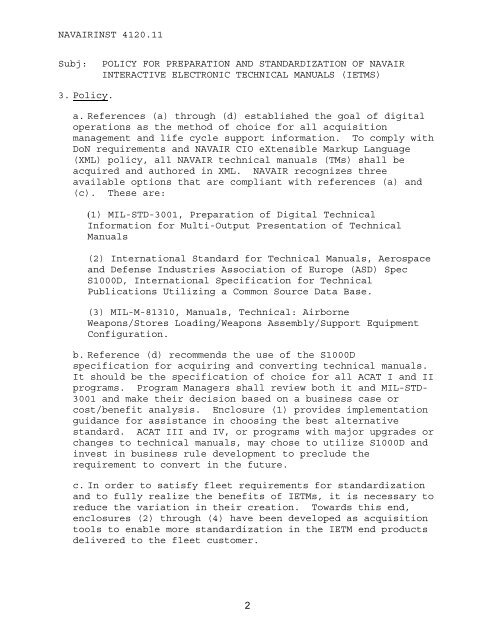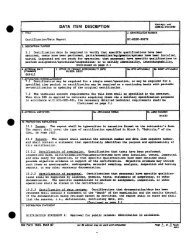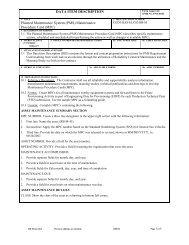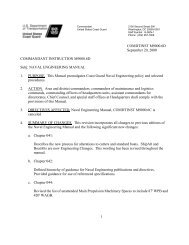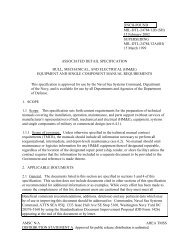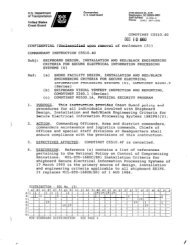NAVAIR INSTRUCTION 4120.11 From: Commander, Naval Air ...
NAVAIR INSTRUCTION 4120.11 From: Commander, Naval Air ...
NAVAIR INSTRUCTION 4120.11 From: Commander, Naval Air ...
- No tags were found...
Create successful ePaper yourself
Turn your PDF publications into a flip-book with our unique Google optimized e-Paper software.
<strong>NAVAIR</strong>INST <strong>4120.11</strong><br />
Subj:<br />
POLICY FOR PREPARATION AND STANDARDIZATION OF <strong>NAVAIR</strong><br />
INTERACTIVE ELECTRONIC TECHNICAL MANUALS (IETMS)<br />
3. Policy.<br />
a. References (a) through (d) established the goal of digital<br />
operations as the method of choice for all acquisition<br />
management and life cycle support information. To comply with<br />
DoN requirements and <strong>NAVAIR</strong> CIO eXtensible Markup Language<br />
(XML) policy, all <strong>NAVAIR</strong> technical manuals (TMs) shall be<br />
acquired and authored in XML. <strong>NAVAIR</strong> recognizes three<br />
available options that are compliant with references (a) and<br />
(c). These are:<br />
(1) MIL-STD-3001, Preparation of Digital Technical<br />
Information for Multi-Output Presentation of Technical<br />
Manuals<br />
(2) International Standard for Technical Manuals, Aerospace<br />
and Defense Industries Association of Europe (ASD) Spec<br />
S1000D, International Specification for Technical<br />
Publications Utilizing a Common Source Data Base.<br />
(3) MIL-M-81310, Manuals, Technical: <strong>Air</strong>borne<br />
Weapons/Stores Loading/Weapons Assembly/Support Equipment<br />
Configuration.<br />
b. Reference (d) recommends the use of the S1000D<br />
specification for acquiring and converting technical manuals.<br />
It should be the specification of choice for all ACAT I and II<br />
programs. Program Managers shall review both it and MIL-STD-<br />
3001 and make their decision based on a business case or<br />
cost/benefit analysis. Enclosure (1) provides implementation<br />
guidance for assistance in choosing the best alternative<br />
standard. ACAT III and IV, or programs with major upgrades or<br />
changes to technical manuals, may chose to utilize S1000D and<br />
invest in business rule development to preclude the<br />
requirement to convert in the future.<br />
c. In order to satisfy fleet requirements for standardization<br />
and to fully realize the benefits of IETMs, it is necessary to<br />
reduce the variation in their creation. Towards this end,<br />
enclosures (2) through (4) have been developed as acquisition<br />
tools to enable more standardization in the IETM end products<br />
delivered to the fleet customer.<br />
2


